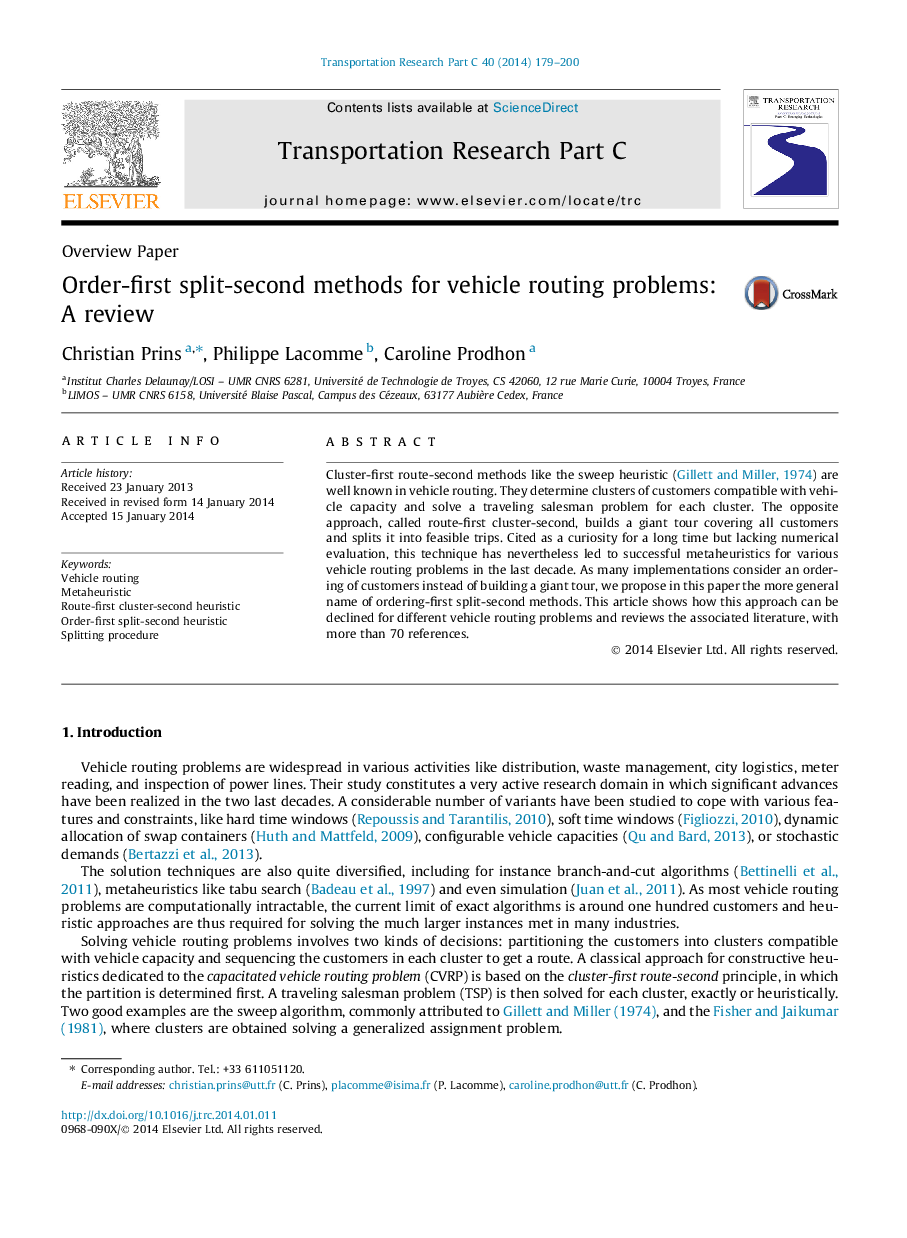| Article ID | Journal | Published Year | Pages | File Type |
|---|---|---|---|---|
| 525277 | Transportation Research Part C: Emerging Technologies | 2014 | 22 Pages |
•Order-first split-second methods for vehicle routing are reviewed for the first time.•More than 70 references are covered and a classification in four groups is proposed.•Efficient algorithms and examples are provided.•It is shown that such methods are now very efficient, which was not the case in 2002.
Cluster-first route-second methods like the sweep heuristic (Gillett and Miller, 1974) are well known in vehicle routing. They determine clusters of customers compatible with vehicle capacity and solve a traveling salesman problem for each cluster. The opposite approach, called route-first cluster-second, builds a giant tour covering all customers and splits it into feasible trips. Cited as a curiosity for a long time but lacking numerical evaluation, this technique has nevertheless led to successful metaheuristics for various vehicle routing problems in the last decade. As many implementations consider an ordering of customers instead of building a giant tour, we propose in this paper the more general name of ordering-first split-second methods. This article shows how this approach can be declined for different vehicle routing problems and reviews the associated literature, with more than 70 references.
